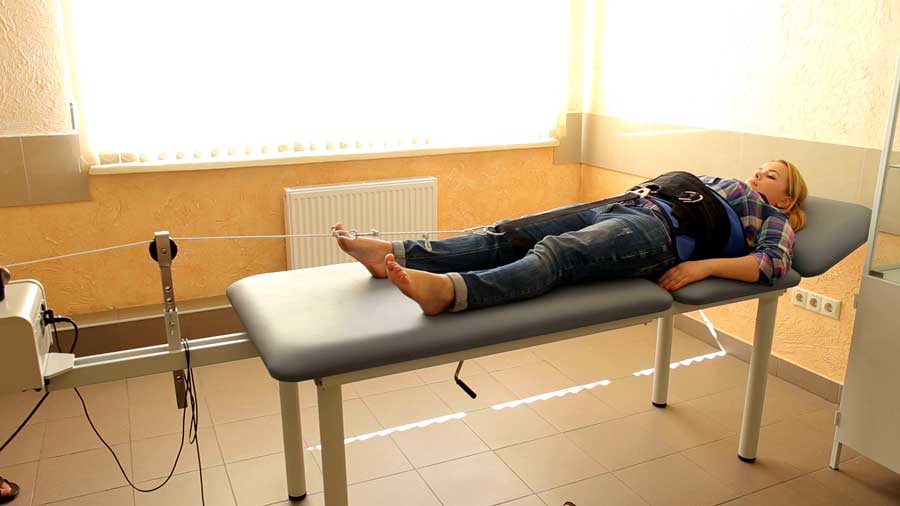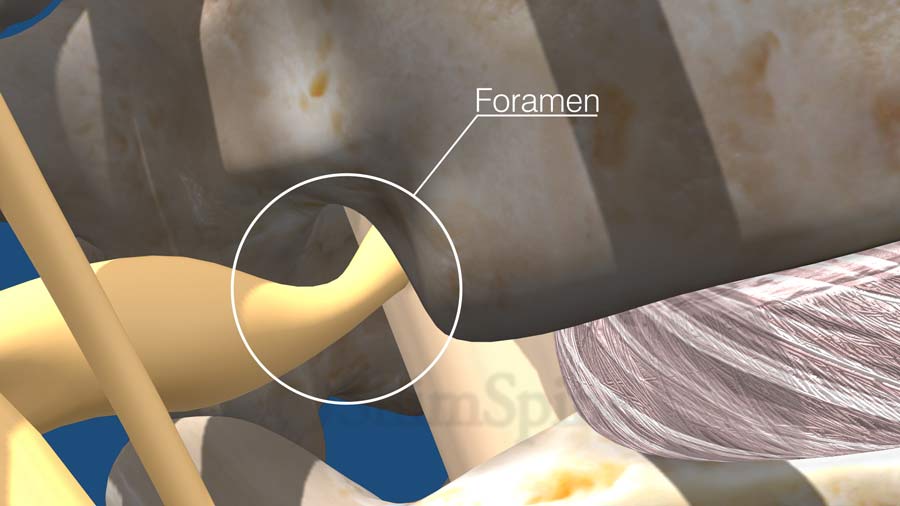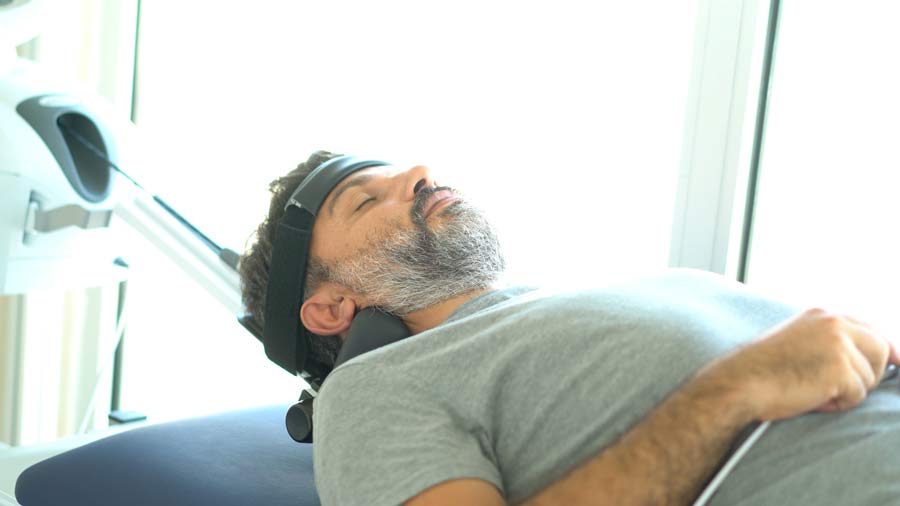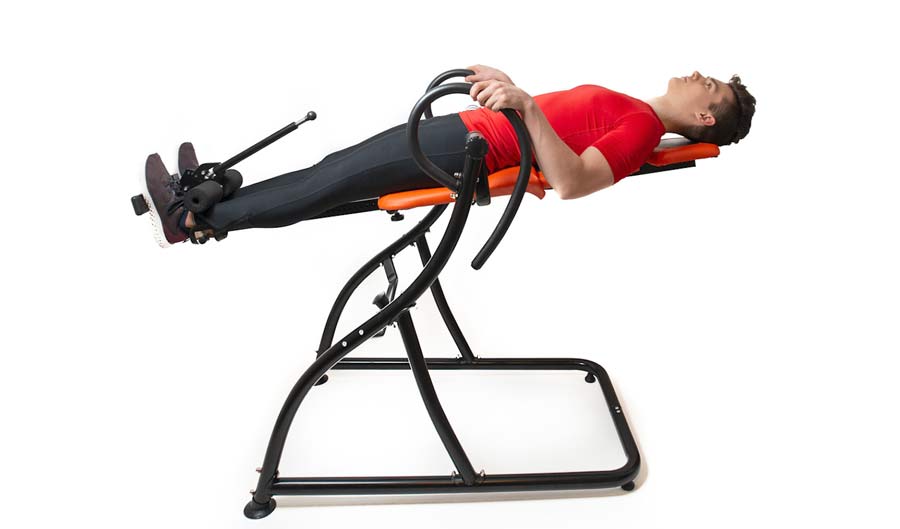What is Spine Traction?
What is traction? How does it help your spine? Is it the same as decompression? Is an inversion table a form of traction?
The answer is all are forms of traction.
There are many variations, but the basic concept is to pull on the spine to provide some pain relief. Traction has been recommended for non life threatening spine conditions.

Traditional traction is associated with a harness applying a pulling force on the torso for the lower back, or pulling on the chin and back of head for the neck.
Decompression is associated with a controlled force applied via a machine that stretches your spine during application.
An inversion table is a form of gravitational traction, with the force determined by the angle of decline.
Traction is based on several concepts, which have not been completely proven.
- Injured muscles that contract in spasm can be slowly stretched out to length, loosening the muscles, and reducing the spasms. Conceptually, the muscles fatigue over time, eventually allowing relaxation of the muscle tension, and reduction of pain.
- The discs are pulled apart, stretching the annular fibers, and producing a negative pressure in the disc causing disc bulges and herniations to go back into the center part of the disc.
- Shortened ligaments cause increased pressure on the nerves. Traction lengthens the ligaments making them thinner, and less likely to kink, or press on a nerve.
- Increasing the disc height by traction will result in an increase in the foramen, giving more room for the nerves as they exit the center part of the spine.

While these concepts make sense, it has been hard to prove these changes happen to the spine during traction.
While recommended by more than 70% of Chiropractors, there is a wide variation in how the forces are applied to the spine, how much force is applied to the spine, and how long the force is applied. There are also wide variations in the frequency of these treatments, and the number of sessions needed to effect relief.
If we look at the attempts to do research on spinal traction, unfortunately, the results have been inconclusive. In other words, the Scientific Community cannot find a predictable benefit of using traction.
Still, it is a recommendation utilized by many in the US.

For some, there has been a benefit, although, the research cannot tell if the improvement is because of the traction, or because the natural course of most back and neck pain is improvement over time, regardless of the type, or lack of treatment.
As a Spine Specialist, this is how I discuss traction with my Patients.
It may or may not help you. As long as you do not injure yourself applying the traction, or getting in the inversion table, I do not see a downside. It mainly comes down to cost and time.

If you want to try it, please do. Make sure you understand it’s costs. Some forms of traction are low cost. Other forms including the Decompression table treatments can be expensive, as the technology and regulation costs to produce these tables are significant.
Like all my recommendations, as long as there are no risks, and the Patient Understands the financial responsibility associated with the treatment I will leave it to the patient. At the same time, I must counsel that It may not provide any benefit, but certainly can be a monetary stress if you choose one of the more expensive options.
If you would like more information about similar topics, Please subscribe to Our newsletter or our YouTube channel.
Last modified: July 22, 2020









